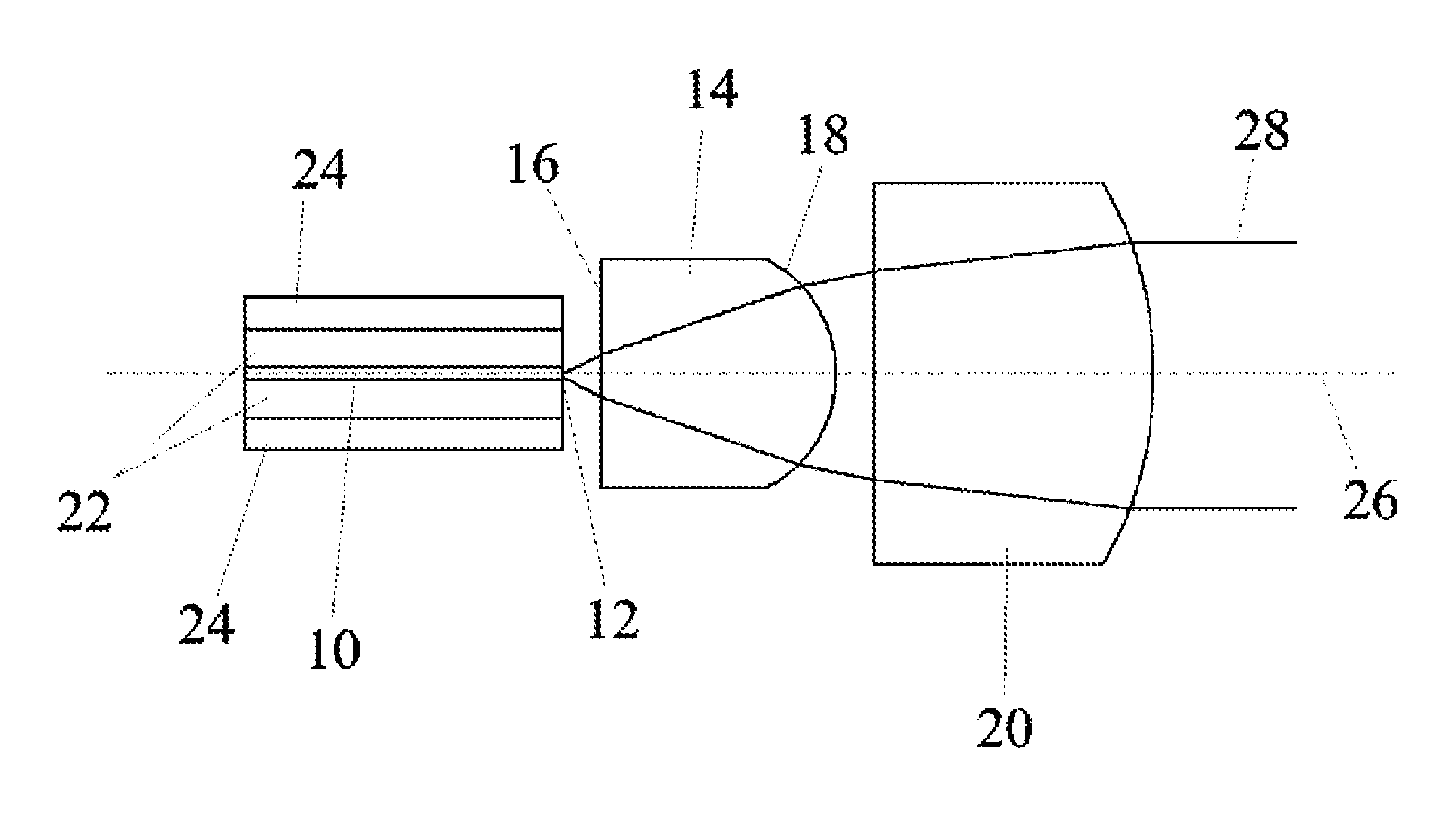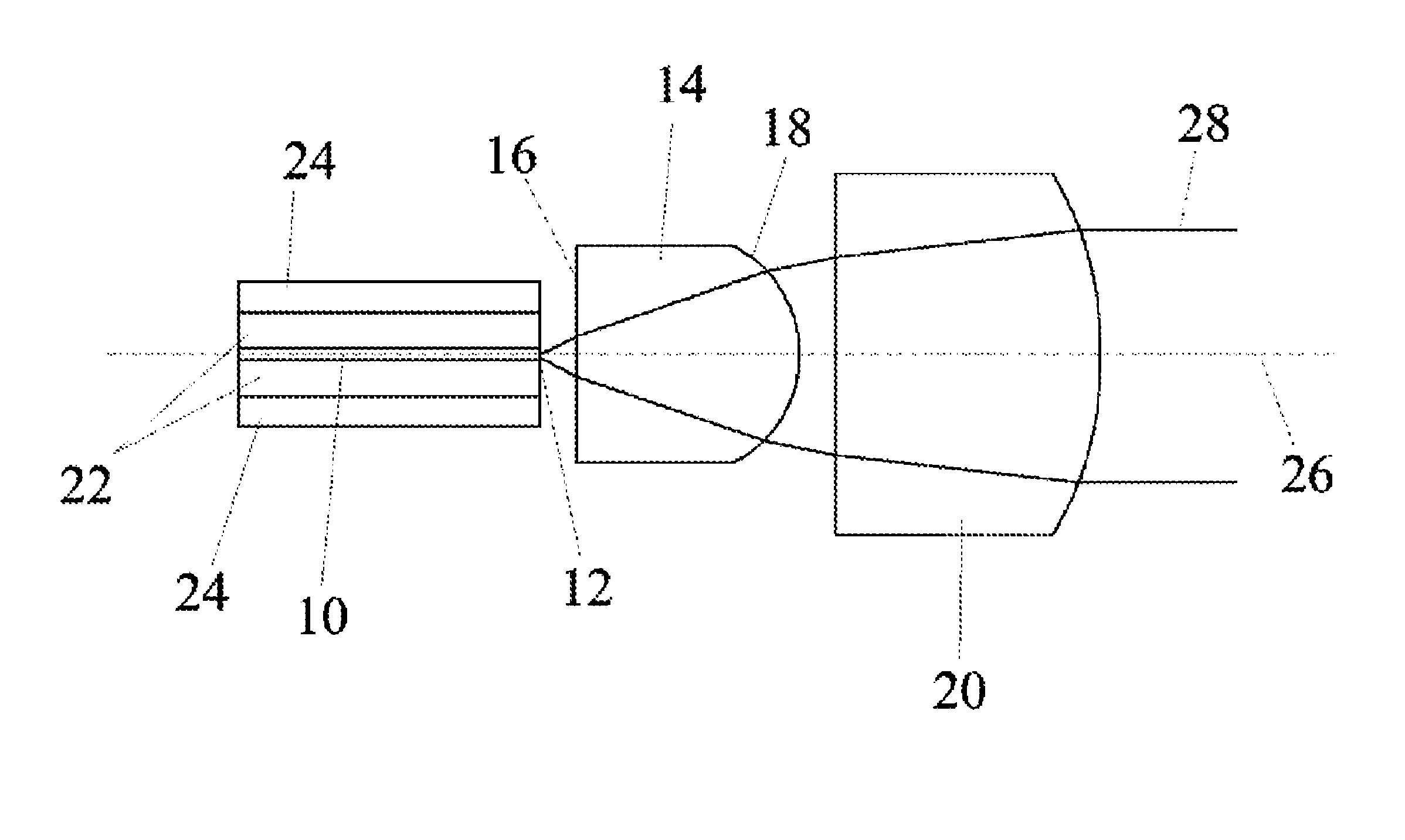Diode laser
- Summary
- Abstract
- Description
- Claims
- Application Information
AI Technical Summary
Benefits of technology
Problems solved by technology
Method used
Image
Examples
Embodiment Construction
[0024]The diode laser according to the invention shown in FIG. 1 comprises an active layer 10 including an exit facet 12 and an external frequency-selective element 14 for wavelength stabilization of the laser radiation, wherein the external frequency-selective element 14 is designed as a volume Bragg grating and comprises an entry surface 16 facing the exit facet 12 of the diode laser and an exit surface 18 facing away from the exit facet 12 of the diode laser. In addition, the diode laser comprises a collimator unit 20 for collimating the laser radiation emitting from the exit facet 12 and passing through the external frequency-selective element 14 in a divergent form, wherein the external frequency-selective element 14 is arranged between the collimator unit 20 and the exit facet 12. According to the invention, the external frequency-selective element 14 is designed in such a manner that the divergence of the radiation emitting from the exit facet 12 is reduced during passage thr...
PUM
 Login to View More
Login to View More Abstract
Description
Claims
Application Information
 Login to View More
Login to View More - R&D
- Intellectual Property
- Life Sciences
- Materials
- Tech Scout
- Unparalleled Data Quality
- Higher Quality Content
- 60% Fewer Hallucinations
Browse by: Latest US Patents, China's latest patents, Technical Efficacy Thesaurus, Application Domain, Technology Topic, Popular Technical Reports.
© 2025 PatSnap. All rights reserved.Legal|Privacy policy|Modern Slavery Act Transparency Statement|Sitemap|About US| Contact US: help@patsnap.com


